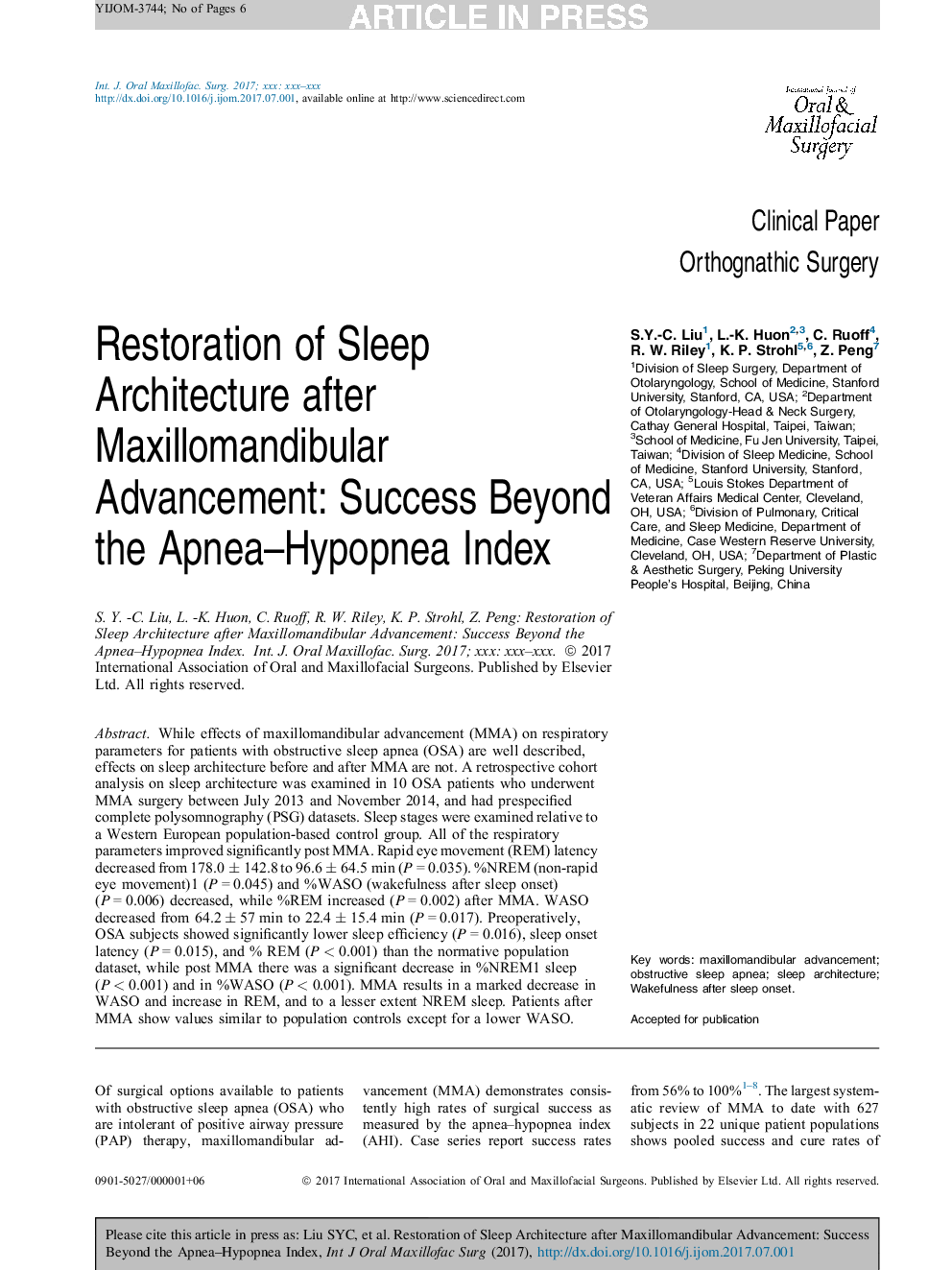| Article ID | Journal | Published Year | Pages | File Type |
|---|---|---|---|---|
| 8697919 | International Journal of Oral and Maxillofacial Surgery | 2017 | 6 Pages |
Abstract
While effects of maxillomandibular advancement (MMA) on respiratory parameters for patients with obstructive sleep apnea (OSA) are well described, effects on sleep architecture before and after MMA are not. A retrospective cohort analysis on sleep architecture was examined in 10 OSA patients who underwent MMA surgery between July 2013 and November 2014, and had prespecified complete polysomnography (PSG) datasets. Sleep stages were examined relative to a Western European population-based control group. All of the respiratory parameters improved significantly post MMA. Rapid eye movement (REM) latency decreased from 178.0 ± 142.8 to 96.6 ± 64.5 min (P = 0.035). %NREM (non-rapid eye movement)1 (P = 0.045) and %WASO (wakefulness after sleep onset) (P = 0.006) decreased, while %REM increased (P = 0.002) after MMA. WASO decreased from 64.2 ± 57 min to 22.4 ± 15.4 min (P = 0.017). Preoperatively, OSA subjects showed significantly lower sleep efficiency (P = 0.016), sleep onset latency (P = 0.015), and % REM (P < 0.001) than the normative population dataset, while post MMA there was a significant decrease in %NREM1 sleep (P < 0.001) and in %WASO (P < 0.001). MMA results in a marked decrease in WASO and increase in REM, and to a lesser extent NREM sleep. Patients after MMA show values similar to population controls except for a lower WASO.
Related Topics
Health Sciences
Medicine and Dentistry
Dentistry, Oral Surgery and Medicine
Authors
S.Y.-C. Liu, L.-K. Huon, C. Ruoff, R.W. Riley, K.P. Strohl, Z. Peng,
